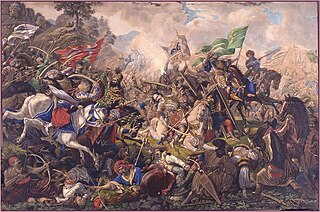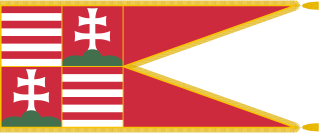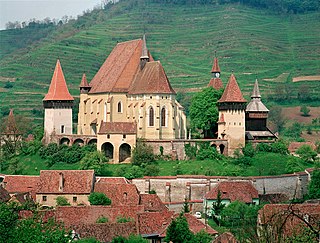 W
WThe Battle of Breadfield was the most tremendous conflict fought in Transylvania up to that time in the Ottoman–Hungarian Wars, taking place on October 13, 1479, on the Breadfield near the Saxon village of Alkenyér next to the Maros (Mureş) river. The Hungarian army was led by Pál Kinizsi, István Báthory, Vuk Branković, and Basarab Laiotă cel Bătrân.
 W
WThe Diploma Andreanum, or Goldener Freibrief der Siebenbürger Sachsen, was issued by Andrew II of Hungary in 1224, granting provisional autonomy to colonial Germans residing in the Siebenbürgen region of the Kingdom of Hungary.
 W
WThe Duke of Transylvania was a title of nobility four times granted to a son or a brother of the Hungarian monarch. The dukes of the first and second creations, Béla (1226–1235) and Stephen of the Árpád dynasty were in fact viceroys with significant authority in Transylvania. The duke of the third creation, Louis, did not administer the province. The fourth duke, Stephen of the Anjou dynasty (1350–1351) did not play any significant role in politics.
 W
WThe following is a list of fortified churches in Transylvania. Southeastern Transylvania in Romania has one of the highest numbers of still-existing fortified churches, which were built during the 13th to 16th centuries, a period during which Transylvania was part of the Kingdom of Hungary and the Ottoman Empire was rising. More than 150 villages in the area count various types of fortified churches, seven of them being included in the UNESCO World Heritage under the name of Villages with fortified churches in Transylvania.
 W
WThe Gepids were an East Germanic tribe who lived in the area of modern Romania, Hungary and Serbia, roughly between the Tisza, Sava and Carpathian mountains. They were closely related to, or a subdivision of, the Goths.
 W
WGyula was, according to Muslim and Byzantine sources, the title of one of the leaders, the second in rank, of the Hungarian tribal federation in the 9th–10th centuries. In the earliest Hungarian sources, the title name is only recorded as a personal name.
 W
WIn the Late Middle Ages, the Kingdom of Hungary, a country in Central Europe, experienced a period of interregnum in the early 14th century. Royal power was restored under Charles I (1308–1342), a scion of the Capetian House of Anjou. Gold and silver mines opened in his reign produced about one third of the world's total production up until the 1490s. The kingdom reached the peak of its power under Louis the Great (1342–1382) who led military campaigns against Lithuania, southern Italy and other faraway territories.
 W
WThe Kolozsmonostor Abbey was a Benedictine Christian monastery at Kolozsmonostor in Transylvania in the medieval Kingdom of Hungary. According to modern scholars' consensus, the monastery was established by Ladislaus I of Hungary before 1095.
 W
WȘchei was an old Romanian exonym referring to the Bulgarians, especially in Transylvania and northern Wallachia. As a name, it has been preserved in the names of towns colonized in the 14th century by Bulgarians, in toponyms, hydronyms, surnames. The word is thought to derive from Latin sclavis, a popular designation for the South Slavs that was also used in Albanian until the 20th century.
 W
WThe south-eastern Transylvania region in Romania currently has one of the highest numbers of existing fortified churches from the 13th to 16th centuries. It has more than 150 well preserved fortified churches of a great variety of architectural styles.